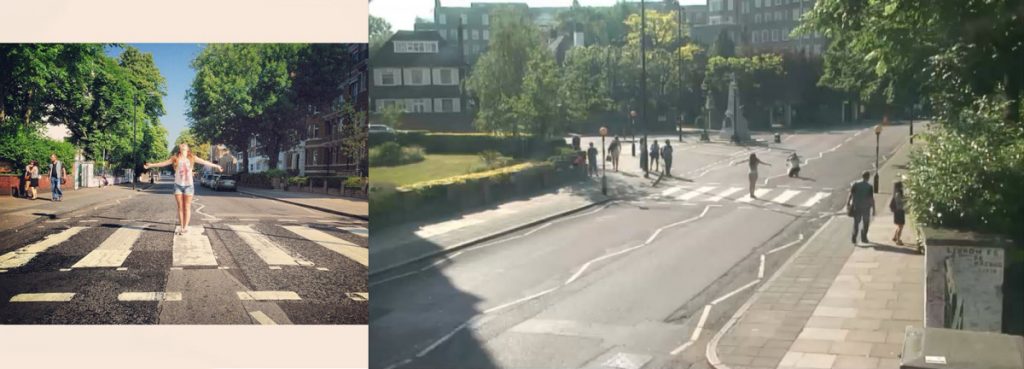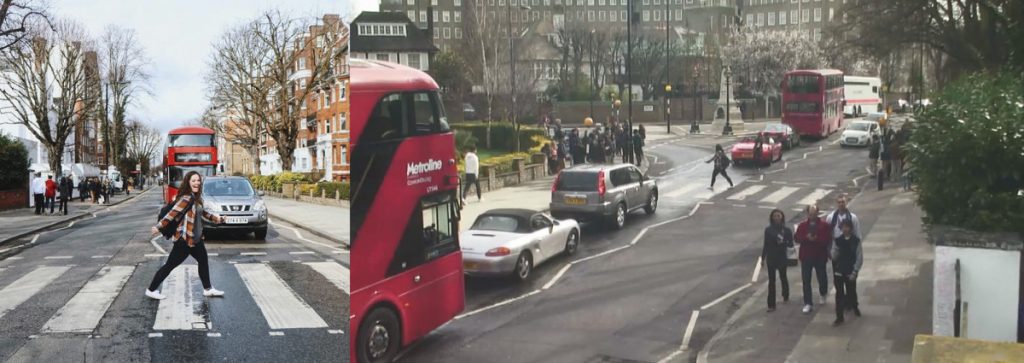by Carlos Rene Pacheco
Found is an ongoing, globally-collaborative exploration utilizing social media and live streaming web-cams to pinpoint a moment in time from multiple perspectives. A virtual link is created between myself and the participants, all of whom are complete strangers, in a questioning of privacy and access to information.

When I began work on Found I was a graduate student at Ohio University in Athens, Ohio. The idea developed out of my own general wonder at what events I might witness through live streaming cameras placed around the world. The cameras exist as a form of armchair tourism. Can’t travel to New York? Experience the bustling streets of Times Square without ever leaving your living room.
What you come to realize very quickly is that the scenes playing out in front of these watchful eyes are often quite mundane, sometimes empty. One camera features a static city skyline, the only sign of life being the flicker of lights in the distant windows. Another camera features an unpopulated beach with muted, pixelated waves in the background. Admittedly, the beach scenes were a nice reprieve from the cold Ohio winters.
Nevertheless, I found myself returning to the more active cameras to do a little people watching. The repetition of certain actions people were performing, specifically the act of taking pictures, caught my attention. Everyone was capturing essentially the same image over and over again; each new image contributing to a sort of collective memory. What happens to these memories? Could I find them?
The web-cam I had, initially, been working with in Times Square, New York City, was taken down so I shifted my attention to another tourist destination, Abbey Road, London. I was especially fond of the notion that a photograph was the reason people made the pilgrimage to this spot. They come in droves to the crossing made famous by the Beatles, often with the intention of recreating the famous Abbey Road album cover photograph. And they never get it quite right, looking like something between Egyptian hieroglyphics and the alleged Bigfoot of the Patterson-Gimlin film.

The first step in creating a virtual link between myself and the image-makers was finding the tourist photographs being posted online. One search for #abbeyroad yields nearly 400,000 results. I was able to sift through all the noise and pick out the self-portraits people had shared. The one hitch is that the platforms where these images are posted remove the Exif1Exchangeable image file format (officially Exif, according to JEIDA/JEITA/CIPA specifications) is a standard that specifies the formats for images, sound, and ancillary tags used by digital cameras (including smartphones), scanners and other systems handling image and sound files recorded by digital cameras. Wikipedia contributors. (2018, November 28). Exif. In Wikipedia, The Free Encyclopedia. Retrieved 12:40, December 14, 2018, from: https://en.wikipedia.org/wiki/Exif metadata such as date, time and GPS location from the photographs. The only information I have is the time the image was posted. This is often not the same as when the image was taken. Some users share their photographs immediately, while others wait until it is convenient. If the most convenient time to share the photograph is two days later I will never find it in the live stream.
The capture to share latency creates a dilemma. The feed at Abbey Road is live but there is an archive that goes back 24-hours from the local time of the camera. Every hour, an hour is removed from the archive. Once that hour is gone, that’s it; it is gone. Working between different time zones means that I was already at a disadvantage. With only a vague sense of when a photograph was made I had to rely on the information in the still photograph; the position of the sun, traffic, street lights. If I could look at the photograph and estimate what time of day it was made then I could narrow my search window.

One photograph I found features a young woman standing in the crosswalk her arms outstretched, head thrown back, basking in the glory of her moment. The photograph is relatively empty. This was the first clue that the photograph was made early in the day, since it lacked the usual crowd of people and traffic. The warm light and long shadows were the second clue. With that information I narrowed my search in the live feed down to a few hours. As I scrubbed through each hour in the playback window I could narrow the time frame even further. If the light seemed to dim when compared to the still image then I must have gone too far back. If the shadows receded as the sun rose overhead I had gone too far forward in the day. The whole process took minutes on a good day.
On cloudy days when clues like the position of the sun are not as helpful, the time of day is very difficult to discern. I focused on other elements in the photographs. In one instance there was a red double-decker bus in the background of a photograph. The route information on the bus’ marquee read, “Oxford Circus 189.” The bus schedule showed that particular route saw a bus pass through every half hour, give or take a few minutes. From there I could scrub through the live feed looking for buses. No bus, keep scrubbing. The particular bus I was looking for had a silver SUV in front of it. Bus but no SUV? Keep scrubbing. Until finally, there it was, a double-decker bus with a silver SUV in front of it. And, there in the crossing about to make her photograph was the elated, young woman in the plaid shirt I was looking for.
The final step in the process was to bring these two instances together. I synchronized the video I captured through the web-cam with the still photograph made on the other end. They show the exact moment the self-portrait was taken. I then reached out to each person I had found and shared my image with them. I also asked if I could use their photograph in the project. The community coming to these tourist destinations is truly an international one, so sometimes it required some rough online translating. Surprisingly, most people were happy to oblige to my strange request. If anyone said no, I didn’t use their photograph.
Having taken a break to get out from behind the computer screen and make my own photographs for a while, I’m excited to pick up where I left off and explore new locations. The landscape has changed in the few years since I first started the project. New concerns regarding technology and online privacy seemingly arise more frequently now. I wonder what, if any, impact this might have on people’s online interactions.